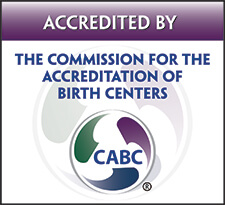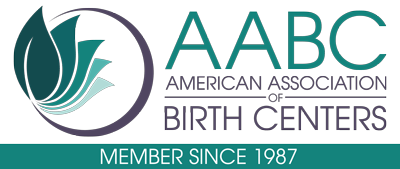HEALTHCARE: ROADS TO REFORM
Childbirth: Can the U.S. improve?
Christine Cotter / Los Angeles Times
Ruby Wales holds her newborn, Carson. Her first doctor worried more about the risks of vaginal delivery than of cesarean, so she found a different one.
C-sections are expensive. Doctors ask if we are doing too many.
By Lisa Girion
May 17, 2009
After an emergency cesarean with her first baby, Ruby Wales was holding out for a vaginal birth with her second one.
With a toddler underfoot, the 33-year-old Mission Viejo woman wanted a faster recovery. But finding a physician to deliver her second child wasn’t easy. Her first obstetrician turned her down flat. “She said, ‘No — no way,’ ” Wales recalled.
Once reserved for cases in which the life of the baby or mother was in danger, the cesarean is now routine. The most common operation in the U.S., it is performed in 31% of births, up from 4.5% in 1965.
With that surge has come an explosion in medical bills, an increase in complications — and a reconsideration of the cesarean as a sometimes unnecessary risk.
It is a big reason childbirth often is held up in healthcare reform debates as an example of how the intensive and expensive U.S. brand of medicine has failed to deliver better results and may, in fact, be doing more harm than good.
“We’re going in the wrong direction,” said Dr. Roger A. Rosenblatt, a University of Washington professor of family medicine who has written about what he calls the “perinatal paradox,” in which more intervention, such as cesareans, is linked with declining outcomes, such as neonatal intensive care admissions. Maternity care, he said, “is a microcosm of the entire medical enterprise.”
As the No. 1 cause of hospital admissions, childbirth is a huge part of the nation’s $2.4-trillion annual healthcare expenditure, accounting in hospital charges alone for more than $79 billion.
Because spending on the average uncomplicated cesarean for all patients runs about $4,500, nearly twice as much as a comparable vaginal birth, cesareans account for a disproportionate amount (45%) of delivery costs. (Among privately insured patients, uncomplicated cesareans run about $13,000.)
Pregnancy is the most expensive condition for both private insurers and Medicaid, according to a 2008 report by the Childbirth Connection, a New York think tank.
“The financial toll of maternity care on private [insurers]/employers and Medicaid/taxpayers is especially large,” the report said. “Maternity care thus plays a considerable role in escalating healthcare costs, which increasingly threaten the financial stability of families, employers, and federal and state budgets.”
The cesarean rate in the U.S. is higher than in most other developed nations. And in spite of a standing government goal of reducing such deliveries, the U.S. has set a new record every year for more than a decade.
The problem, experts say, is that the cesarean — delivery via uterine incision — exposes a woman to the risk of infection, blood clots and other serious problems. Cesareans also have been shown to increase premature births and the need for intensive care for newborns. Even without such complications, cesareans result in longer hospital stays.
Inducing childbirth — bringing on or hastening labor with the drug oxytocin — also is on the rise and is another source of growing concern. Experts say miscalculations often result in the delivery of infants who are too young to breathe on their own. Induction, studies show, also raises the risk of complications that lead to cesareans.
Despite all this intervention — and, many believe, because of it — childbirth in the U.S. doesn’t measure up. The U.S. lags behind other developed nations on key performance indicators including infant mortality and birth weight.
And in at least two areas, the U.S. has lost ground after decades of improvement: The maternal death rate began to rise in 2002, and the typical American newborn is delivered at 39 weeks, down from the full 40. Public health experts view the trends with alarm.
At a recent conference held by Childbirth Connection, physicians, employers, insurers and hospital operators wrestled with the disappointing data and discussed thorny questions, such as whether insurers should stop paying more for cesareans than for vaginal births.
“Cesarean birth ends up being a profit center in hospitals, so there’s not a lot of incentive to reduce them,” said Dr. Elliot Main, chief of obstetrics for Sutter Health, a Northern California hospital chain.
But there is a lot that hospitals can do to reduce them, as illustrated by the wide variation in cesarean rates. Among California hospitals, cesareans range from 16% to 62% of births.
Such variation means a lot of women are getting unnecessary cesareans, Main said. “There’s no justification for that kind of variation.”
The surge in cesareans may owe more to celebrity magazines than medical journals. After word got out that Victoria “Posh Spice” Beckham had three, physicians reported a surge in requests for such deliveries, dubbed the “too posh to push” bump.
Physicians, too, have been blamed for failing to make women fully aware of the consequences of cesareans, and for promoting them for convenience.
But change is underway. The Institute for Healthcare Improvement’s Strategic Partners program trains hospitals to implement a set of guidelines, such as the careful use of oxytocin, and a ban on elective deliveries before 39 weeks. In four years, 60 hospitals have signed on.
“It’s a culture change,” program director Frank Federico said. “We’re at a tipping point. . . . It used to be that we spent more time defending the 39-week rule. Lately, there’s no question about that. It’s, ‘How can we improve the process to support that?’ ”
WellPoint Inc. and UnitedHealthcare Services Inc., the nation’s largest health insurers, also are trying to curb cesareans.
In an analysis of its claims, United found that 48% of newborns admitted to neonatal intensive care units were from scheduled deliveries, many of them before 39 weeks.
United targeted a group of Texas obstetricians with particularly high rates of deliveries before 39 weeks.
An analysis showed that the babies these doctors delivered were admitted to neonatal ICUs twice as often as the national average.
After being notified of the correlation, the physicians changed their practices and reduced neonatal ICU admissions by 46% in three months.
The rise in avoidable first-birth cesareans has had a multiplier effect. Most U.S. physicians discourage vaginal deliveries after a cesarean because of some widely publicized cases several years ago in which the uterus split disastrously along the prior incision.
That’s why Ruby Wales’ first obstetrician refused.
“She said it was because there is a 1% chance of a uterine rupture,” Wales said. “And I thought that was weird because there’s more chance of things going wrong with a cesarean section.”
But some obstetricians believe that new evidence supports allowing some women the option of trying for a vaginal birth.
“If the old incision was a vertical, then a trial of labor is not a good idea,” said Dr. David Lagrew, medical director for the Women’s Hospital at Saddleback Memorial Medical Center in Laguna Hills. “But what happens now in the United States is the low transverse, an incision in the bottom part of the uterus, from side to side. Those heal better. All the studies say, in those types of incisions, the risk is less than 1%, probably a half percent, that it will open during labor.”
Saddleback delivers about 3,000 babies a year. In March, it joined a few hospitals nationwide that are pioneering the “hospitalist” approach to maternity care, which adds a measure of safety to attempted vaginal births after cesareans. A hospitalist is a doctor who cares only for hospitalized patients.
Hospitalist obstetricians staff the maternity ward 24 hours a day, seven days a week. They are there to deliver babies when an attending obstetrician gets stuck in traffic, to monitor lengthy labors and to assist in emergencies.
Saddleback supported Wales’ desire for a vaginal birth. Nine days after her due date and after 30 hours of labor, she gave birth — the way she wanted — to an 8-pound, 11-ounce boy.
“I was so glad nothing happened at the last minute to have an emergency C-section because I’d gone through all this work,” said Wales, resting in her hospital bed with baby Carson in her arms. “I’m so relieved that I don’t have to deal with a [cesarean] recovery because I have a 2 1/2-year-old at home who is very active.”






